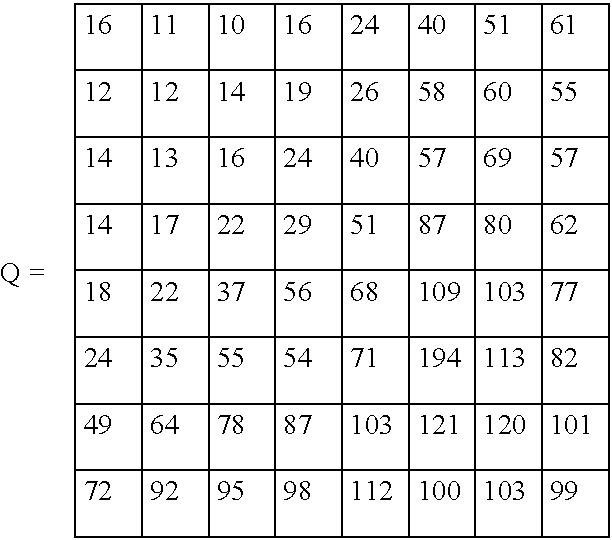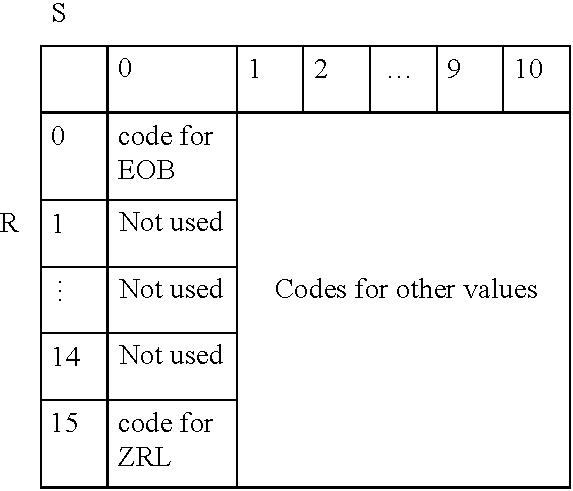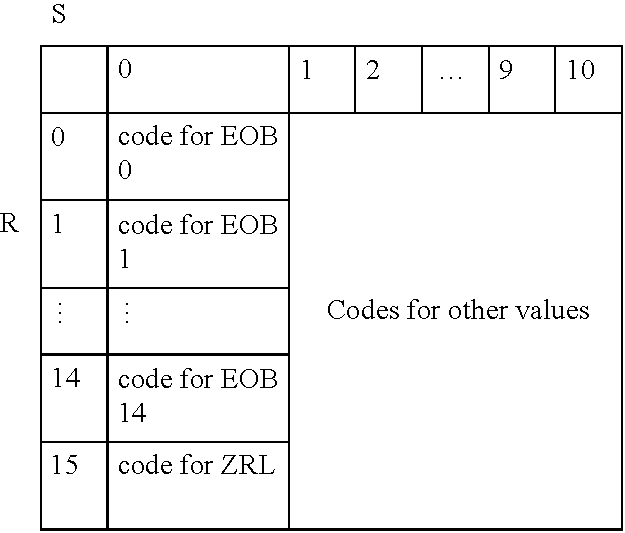Signaling adaptive-quantization matrices in JPEG using end-of-block codes
a technology of adaptive quantization and block codes, applied in the field of jpeg adaptive quantization signaling, can solve the problems of data block boundaries of images, baseline jpeg, and each scan takes about the same amount of computation
- Summary
- Abstract
- Description
- Claims
- Application Information
AI Technical Summary
Problems solved by technology
Method used
Image
Examples
Embodiment Construction
[0027] In the following Description, for purposes of explanation and not limitation, specific details, including details of the Joint Photographic Experts Group (JPEG) standard, are set forth in order to provide a thorough understanding of the present invention. However, it will be apparent to those of ordinary skill in the art that the present invention can be practiced in other embodiments that depart from these specific details. In other instances, detailed descriptions of well-known methods, devices, logical code (e.g., hardware, software, firmware), and the like are omitted so as not to obscure description of embodiments of the present invention with unnecessary detail. Preferred embodiments of the present invention and its advantages are best understood by referring to FIGS. 1-7 of the Drawings.
[0028] FIG. 1 is a block diagram of an image-compression system 100. The system 100 can be used to compress a digitized image according to the JPEG baseline sequential mode and includes...
PUM
 Login to View More
Login to View More Abstract
Description
Claims
Application Information
 Login to View More
Login to View More - R&D
- Intellectual Property
- Life Sciences
- Materials
- Tech Scout
- Unparalleled Data Quality
- Higher Quality Content
- 60% Fewer Hallucinations
Browse by: Latest US Patents, China's latest patents, Technical Efficacy Thesaurus, Application Domain, Technology Topic, Popular Technical Reports.
© 2025 PatSnap. All rights reserved.Legal|Privacy policy|Modern Slavery Act Transparency Statement|Sitemap|About US| Contact US: help@patsnap.com



